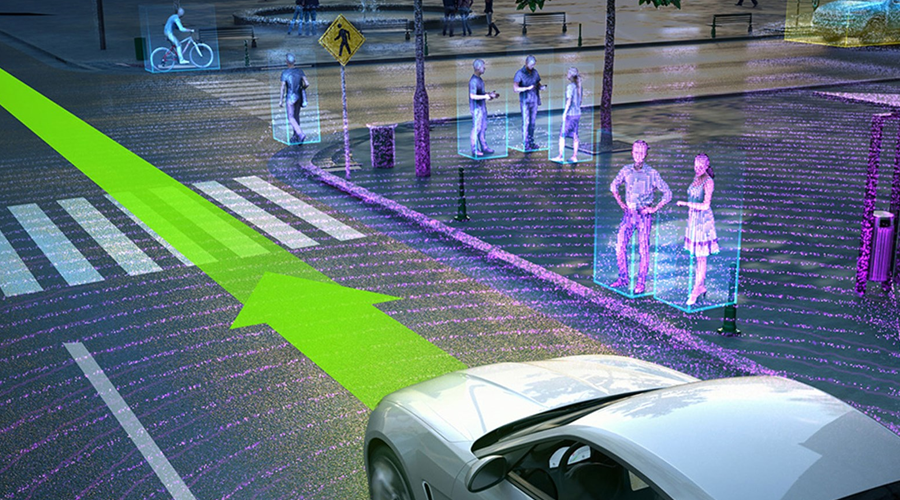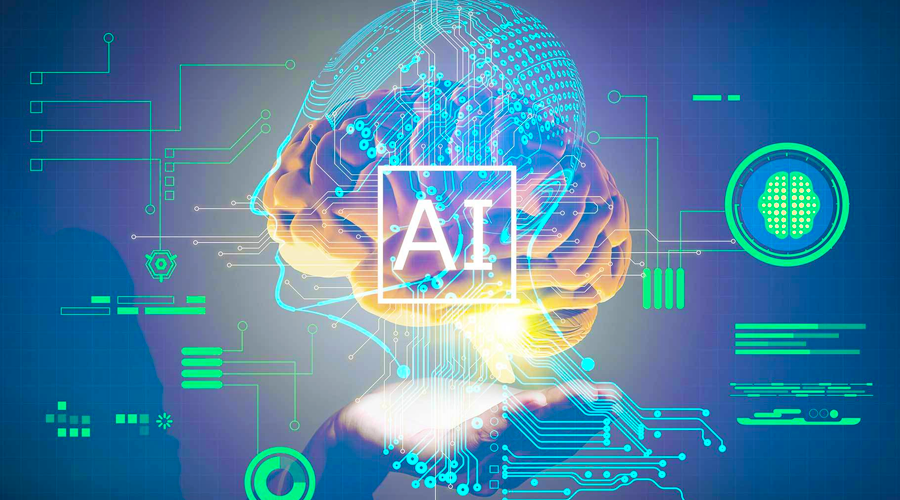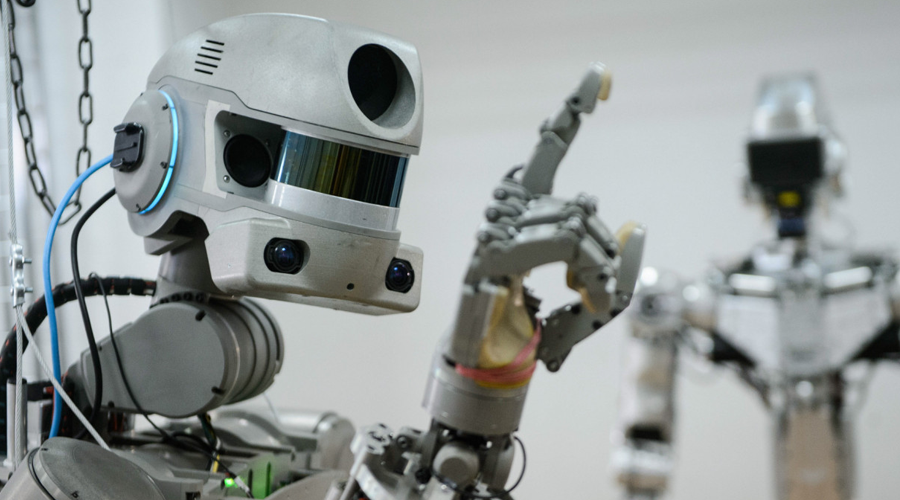It’s hard to imagine that 2020 is here… It seems like a few short years ago we were talking about 2010 and hype around cloud computing. Fast forward to today and it’s clear that we’re embarking on what might be the most technologically disruptive decades of our lifetime. It’s not only technology that’s changing, but it’s also the interaction between technology and humans. In this article, we will be looking at the top ten technology trends for 2020 and making some pretty bold predictions along the way.
#1 - 5G Networks and IoT Gear Up to Take Off

Get ready for the next evolution of the Internet. Fifth-generation wireless technologies also referred to as 5G networks, will completely change how we use the internet and enable the next generation of IT workloads in a technologically reliant society that hates to wait.
It has been referred to as the "cable killer" meaning that 5G technologies have the potential to reduce or eliminate the need for wireline services for basic broadband services. According to Huawei, 5G networks may “support 1,000-fold gains in capacity, connections for at least 100 billion devices and a 10 Gb/s individual user experience of extremely low latency and response times.”
Starting in 2020, 5G wireless networks will open up the possibilities for Internet of Things (IoT) technologies including smart cities and smart homes. In the next ten years, 5G will impact nearly all businesses and industries in the future from manufacturing and logistics to transportation, retail, energy and healthcare. Think autonomous vehicles, wearables, smart devices and more.
But to take these kinds of speeds, top 5G mobile carriers will need to invest heavily in building out their wireless networks consisting of fiber, hardware, data center locations, small cell, and traditional cell towers. How many additional cell towers will be needed in the United States for 5G networks? The answer is an additional 250,000 cell towers.
Where are we now with 5G? Most mobile carriers began rolling out 5G to select cities nearly two years ago. 5G has already started making appearances in cities around the U.S. this year with many more rollouts expected in 2020.
Here’s a list of cities where 5G mobile is available.
Prediction: We predict that 5G wireless will be fully built-out and adopted over the next 5-10 years. However, a lot more rollouts of 5G in major cities will happen by the end of 2020 by Verizon, AT&T, T-Mobile and Sprint. New generations of 5G enabled cell phones and tablets will also make their way on to shelves in a big way in the second half of the year.
Furthermore, just like what 4G LTE is to 5G – we will see the introduction of 6G wireless in 2030. Look out Gigabit per second (Gbps) Internet. Say hello to a Terabit per second (Tbps).
Who knows what applications we will have then? Will it be streaming holograms, fully autonomous automobiles and commercial vehicles, drone deliveries, human chip implants? In any case, 5G wireless will pave the way for some pretty outrageous technologies in the not so distant future.
#2 - Higher Levels of Autonomy for Autonomous Cars

Here's a couple of quick questions for you...
How many autonomous miles has Tesla logged since introducing its autopilot software? According to Forbes Magazine, “Tesla’s total autonomous miles logged has grown exponentially from 0.1 billion in May 2016 to an estimated 1.88 billion as of October 2019.”
Which car manufacturer or technology company has the next highest number of autonomous miles logged? It’s Waymo, a division of Google Alphabet, with just over 1.3 million miles. Time to buy Tesla stock? They have the best data on autonomous driving.
Did you know that are several different levels of autonomous driving? The Society of Automotive Engineers (SAE) created a scale of 0 to 5 to address the different levels of autonomous driving with Level 0 being no automation and Level 5 being full automation. When you hear CEOs of car companies speak about their autonomous vehicles, they’re typically referencing Level 3 or Level 4. According to SAE, “Level 4 automation is a car that can drive itself almost all the time without any human input but might be programmed not to drive in unmapped areas or during severe weather. This is a car you could sleep in.”
Predictions: There've been a lot of bold predictions on autonomous vehicles over the years. Many of which have not come true and are still very far off in the future. In 2020, we predict that there will be a lot more developments and improvements to Level 4 autonomous vehicles and software. We may even see the introduction of Level 4 autonomous vehicles in the commercial applications on a regional basis.
However, we’re probably 5-10 years out where Level 4 and Level 5 are widely available among car manufacturers. This is due in part to major roadblocks for autonomous vehicles such as laws and regulations that will hamper the autonomous technologies and its progress.
#3 – The Edge Takes Shape

What’s with all of the hype around the edge? In today’s digital economy, it’s all about being first to market, making it easier and faster to transact business, and providing the ultimate experience for your customers. Edge computing is the technology that will help you get there.
For nearly all businesses, staying competitive and fighting delays that impact management, operations, and sales revenue is critical. Many CEOs and CIOs are focused on future-proofing their technology infrastructure by focusing on pushing IT applications and data closer to stakeholders - employees, partners and customers to improve efficiency and performance.
If Amazon AWS is investing in edge infrastructure, should you? In addition to aggressively building their own data center facilities, AWS is leasing colocation space from their data center partners like Equinix, Digital Realty and other colocation providers to more compute and storage closer to their customers’ customers.
Here’s a list of all of the Amazon AWS Regions, Availability Zones and Edge Locations. AWS has more than 199 Edge Locations compared to 22 Regions and 69 Availability Zones.
Prediction: In 2020, edge computing is fueled by the rapid evolution of the Internet of Things (IoT) and 5G wireless networks. Vapor IO’s Kinetic Edge Computing which incorporates modular data centers at the base of mobile carrier cell towers. In the future, the edge will power new distributed computing models, blockchain technologies and even autonomous vehicles and drones.
Regional cloud facilities and edge data centers will process data and send it back to central cloud facilities and data centers for additional processing and storage.
#4 – Democratization of Technology

What is the democratization of technology? Think about the word democracy. The term democratization of technology simply means giving people more access to technology. As technology becomes more accessible, it to more rapid developments and innovations.
It’s easy to forget how far we have come over the past 10 years, 20 years or even 30 years. Think back to 1990 if you can even remember that far back. This year marked the introduction of the world wide web (WWW) and the internet browser. Fast forward to today and we live and die by the Internet.
The democratization of technology in 2020 will lead to more innovations, entrepreneurs, and inventions. Think about the rise of artificial intelligence (AI) and machine learning (ML). We’re living in an age in which people don’t have to be experts to create their own offerings on certain platforms, and even amateur developers can find success from producing their own products and services.
According to Gartner, the four key aspects of the democratization of technology will include application development, design, knowledge and data, and analytics. The best example of democratization can be credited to the developer, who will be able to generate data models without learning the skills of a data scientist. Imagine having a concept for an application or website and using artificial intelligence to design, code and build it without you having to know programming languages? That’s the future.
Prediction: We see the democratization of technology as an emerging trend for 2020 but more importantly for the coming decade. Democratization will usher in a new era of entrepreneurs and exciting new technologies that would otherwise not exist without the tools to make them a reality.
#5 – Human Augmentation Becomes a Thing

A primary concern with artificial intelligence is that it will make humans obsolete. What if that wasn’t the case and technology greatly enhanced the capabilities of humans? Human augmentation is a technological breakthrough that focuses on strengthening the physical and cognitive ability of humans. Once integrated, technology will enable humans to execute tasks that were earlier impossible to perform.
It's easy to think of the applications for human augmentation. It's everything from exoskeleton suits to neural implants. We are seeing this today with many medical applications. Those paralyzed from accidents, illness or disease will be able to regain mobility with robotic limbs and artificial intelligence technologies. In addition, neural implants will augment humans to compete with the rise of computers and information.
Elon Musk’s Neuralink company is developing brain-machine interfaces with the goal of implanting devices in humans, allowing them to control phones or computers. It's also making humans more competitive against AI. Humans can take in information much more quickly than you push it out via your voice or your thumbs. With neural implants, you're already connected to the machine and can process a vast about of data quickly.
Prediction: 2020 will mark major developments in human augmentation. This will mostly be on the exoskeleton side of the house as neural networks are still in the very early stages of development. However, we can say that human augmentation does hold substantial potential in the future of technology and humans.
#6 – Distributed Cloud Represents New Era for Cloud

We discussed the edge, edge data centers and edge computing earlier. In fact, it was #3 on the list of the top technology trends for 2020. What is a distributed cloud? A distributed cloud is computation, storage, and networking in a micro-cloud located outside the centralized cloud. Establishing a distributed cloud situates computing closer to the end-user, providing decreased latency and opportunities for increased security.
The cloud in its current state already offers increased performance, reliability and redundancy over traditional IT infrastructure such as colocation and dedicated servers. However, the cloud is still very much a location-based service. You have to select from a specific location where cloud facilities and infrastructure reside. You can obviously add to your cloud footprint by adding regions and zones. However, this is also limited.
Prediction: In 2020, the distributed cloud will represent a new era in cloud technologies. What if your data and applications resided on hundreds or even thousands of cloud servers all over the world? Think blockchain technologies. That may also be the direction of cloud computing.
#7 – Personal Profiling of the Individual

Do you feel like your technology is watching your every move? If yes, you’re not alone. There were various articles published in 2019 that tech giants like Facebook, Twitter, Google, Amazon listened and tracked you without consent. It was all just a big mistake and these companies “accidentally” accessed your data, audio or video. It won’t ever happen again, right? Wrong!
Big data analytics and digital integration into our lives have become so deep that big tech companies and governments are collecting more information than they could ever analyze with current technology. However, personal metadata of the individual is still extremely valuable and will prove even more so in the future as profiles are built. Personal data is often compared to oil - it powers today’s most profitable corporations, just like fossil fuels energized those of the past.
Prediction: Personal data doesn't go away in 2020. We only see more personal profiling and big data collection by big tech and most companies in general. However, this technology raises one glaring question – where’s the consumer consent and where do we draw the socially acceptable line and how will this line differ from consumer to consumer? That leads us to #8 on our list of disruptive technology trends for 2020.
#8 – The Rise of Data Policing (Laws & Regs)

There’s a new sheriff in town. It’s states, countries and government agencies that have decided to act and institute data protection and privacy laws for both businesses and consumers. Data privacy was really kicked off by the European Union’s General Data Protection Regulation (GDPR).
According to Gartner, by 2020, nearly 70% of organizations will be exposed to personal data archiving. That’s a 60% growth since 2018 when the number was at 10%. It’s important for businesses and consumers to become more aware of their vulnerability to data breach and cyber-attacks. That’s the underlying reason for a rush to create laws and regulations around privacy and protection.
Several new laws and regulations that take aim at privacy and protection rights like GDPR. If you are not familiar, please check out the 2018 California Consumer Privacy Act (CCPA). What about 2020? Which countries are enacting privacy laws? Here’s an updated list of countries with data privacy and protection regulations. Here’s a list of individual states in the United States enacting laws and regulations.
Prediction: In 2020, data policing by states, countries and governments become a central focus for politicians as robocalls, spam and data breaches highlight the importance of personal data and data protection. Look for more states in the United States to implement GDPR like laws and regulations.
#9 – The Age of Artificial Intelligence (AI)

The age of artificial intelligence is here and it's not just hype. Companies like Amazon AWS AI/ML, Google AI, IBM Watson, Microsoft AI are continuously improving the capabilities of their platforms. If you've used Apple's Siri, you've used AI. If you've used Amazon Alexa, you've used AI.
Artificial Intelligence (AI) is defined as the simulation of human intelligence by computer processors. Key components of AI include learning, reasoning and self-correction. Further, specific applications for AI include expert systems, speech recognition and machine vision.
There are two categories of artificial intelligence. Weak AI, known as narrow AI, is an AI system that is designed and trained for a particular task. Virtual personal assistants, such as Apple's Siri, are a form of weak AI. Strong AI, known as artificial general intelligence, is an AI system with generalized human cognitive abilities. When presented with an unfamiliar task, a strong AI system is able to find a solution without human intervention.
Artificial Intelligence as a Service (AIaaS) has risen due to the fact that the hardware, software and staffing costs for AI can be expensive. AI as a Service allows individuals and companies to experiment with AI for various business purposes and sample multiple platforms before making a commitment.
Prediction: In 2020, companies begin to experiment a lot more with artificial intelligence. They begin to look at their existing data and the quality of that data. They also begin to conceptualize business and technology challenges that could be solved with AI. Lastly, companies begin to use and beta test AIaaS platforms offered by Amazon AWS, Google, Microsoft and IBM.
#10 – Automation and Robots in the Future

Let's take a look at some of the promising aspects of robots and automation technologies. Robotic technologies will provide us with everything from performing life-saving surgery to replacing humans in dangerous working conditions to making businesses more efficient and helping humans with everyday tasks.
According to the International Federation of Robotics, more than 3 million industrial robots will be in use in factories around the world by 2020. This means that the operational stock will have more than doubled within seven years from 2014-2020.
What does it mean for workers and employees? According to one study, nearly 70 percent of employees believe that robotics and automation offer the opportunity to qualify for higher-skilled work. This is the result of a worldwide automatica survey of 7,000 employees in seven countries.
Prediction: Robots are not going away. They're just getting started. In 2020, we will see robotics and automation continuing its explosive growth for big tech companies, manufacturers, healthcare, logistics and many other industries. Robotics will also make their way into small to mid-sized companies and franchises.






